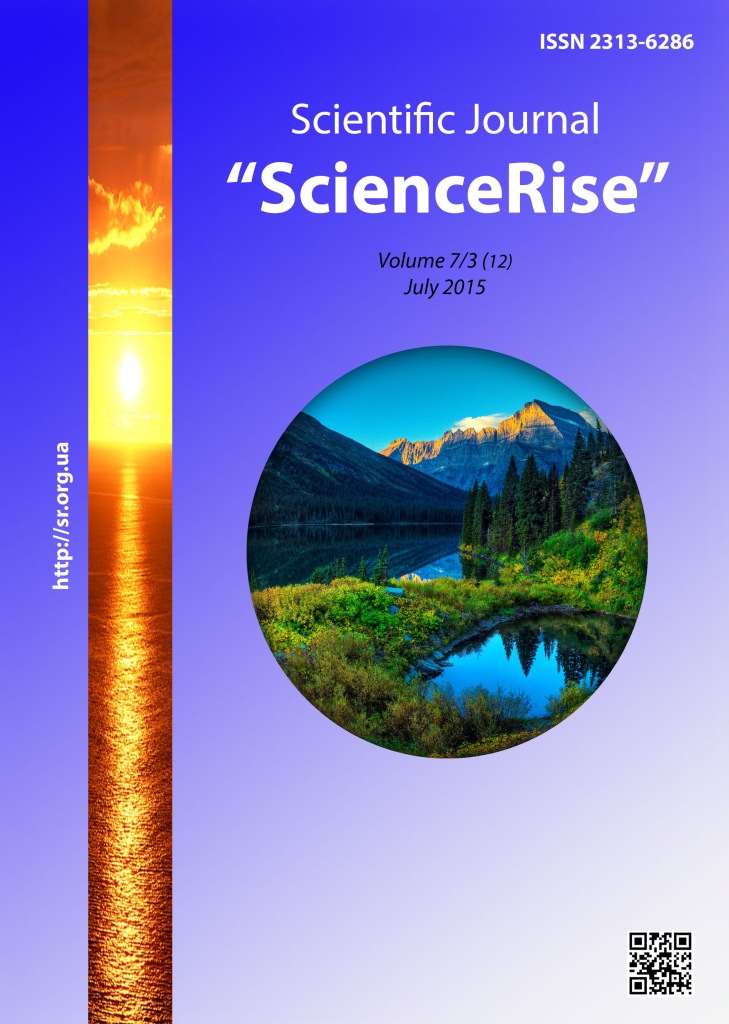Теоретичні підходи до дослідження розвитку гірських територій
DOI:
https://doi.org/10.15587/2313-8416.2015.46931Ключевые слова:
розвиток гірських територій, специфічні властивості території, людська діяльність, депресивні території, законодавчо-нормативне забезпеченняАннотация
У статті розглянуто теоретичні підходи щодо сутності поняття "розвиток гірських територій", подано власне трактування досліджуваного поняття, що обґрунтовується певними умовами та специфічними властивостями території, які впливають на повсякденну людську діяльність. Запропоновано обґрунтування депресивності територій, зокрема тих, де впродовж тривалого часу спостерігається небажане звужене відтворення економічної соціальної та екологічної сфер, або ж які протягом тривалого часу потребують постійної донорської підтримки.Библиографические ссылки
Alaev, E. B. (1983). Social'no-jekonomicheskaja geografija. Ponjatijno-terminologicheskij slovar'. Moscow : Mysl', 350.
Busel, V. T. (2005). Velykyj tlumachnyj slovnyk suchasnoi' ukrai'ns'koi' movy. Golov. red. V. T. Busel, redaktory-leksykografy: V. T. Busel, M. D. Vasylega-Derybas, O. V. Dmytrijev, G. V. Latnyk, G. V. Stepenko. – Kyiv: Irpin': VTF «Perun», 1728.
Kuzyka, S. P. (2002). Ekonomichna i social'na geografija svitu: Navch. posibnyk. Lviv: Svit, 672.
Zhemerov, O. O., Dmytrykov, O. O. (2014). Landshaftoznavchi znannja u shkil'nij geografii': Metod. posib. dlja stud.-geografiv VNZ. Harkiv: HNU im. V. N. Karazina, 50. – Available at: http://dspace.univer.kharkov.ua/bitstream/123456789/9705/2/zhemerov_dmitrikov.pdf
Marynych, O. M. (1989). Geografichna encyklopedija Ukrai'ny: V 3-h t. T. 1. Kyiv. : "Ukrai'ns'ka Radjans'ka Encyklopedija" im. M. P. Bazhana, A–Zh, 416.
Pryrodno-terytorial'ni kompleksy. Landshafty i fizyko-geografichne rajonuvannja. – Available at: http://ukrmap.su/uk-g8/882.html
Osaulenka, O. G. (2014). Statystychnyj shhorichnyk Ukrai'ny za 2013 rik. – Kyiv, 534.
Novykova, A. M. (2000). Depresyvni terytorii': jevropejs'kyj dosvid ta problemy Ukrai'ny. Strategichna panorama, 3–4, 115–118.
Leksin, I. V., Gricjuk, T. V., Leksin, A. V. (2005). Region kak ob’ekt analiza i gosudarstvennogo upravlenija. Regional'naja jekonomika: teorija i praktika, 3, 19–25.
Zastavnyj, F. D. (2005). Depresyvni regiony Ukrai'ny: analiz, ocinka, problemy. Regional'na ekonomika, 1, 87–92.
Baranovs'kyj, M. O. (2007). Depresyvni terytorii': sutnist' ponjattja, osoblyvosti rozvytku, pidhody do typologii'. Ukrai'ns'kyj geografichnyj zhurnal, 3, 26–30.
Galushhak, V. L. (2006). Organizacijno-ekonomichni zasady formuvannja ta realizacii' polityky rozvytku problemnyh terytorij. Poltava, 19.
Pro rozvytok girs'kyh terytorij v Ukrai'ni. Rishennja № 10 "Pro rozrobku proektu Zakonu Ukrai'ny "Pro rozvytok girs'kyh terytorij v Ukrai'ni". – Available at: http://euroregionkarpaty.com.ua/karpaty
(1995). Pro status girs'kyh naselenyh punktiv v Ukrai'ni: Zakon Ukrai'ny vid 15.02.1995 № 56/95-VR. Vidomosti Verhovnoi' Rady Ukrai'ny (VVR), 9, 58.
Kravciv, V. S. (2010). Regional'na polityka stalogo rozvytku girs'kyh terytorij Ukrai'ny: suchasnyj stan ta naprjamky vdoskonalennja. Stalyj rozvytok Karpat ta inshyh girs'kyh regioniv Jevropy: Materialy mizhnarodnoi' naukovo-praktychnoi' konferencii' (Uzhgorod, 8–10 veresnja 2010 roku). – Uzhgorod: TzOV "Papirus-F", 21–27.
Avakjan, G. E. (1989). Podhody k opredeleniju gornyh territorij: Problemy gornogo hozjajstva i rasselenija. Moscow. : IGAN SSSR, 214.
(2003). Jevropejs'ka hartija pro zahyst gir. Rekomendacija 130 (2003). Kongresu miscevyh i regional'nyh vlad Rady Jevropy. – Available at : http ://www.coe.int/t/congress/Default_en.asp
(2005). Miscevist' girs'ka. Liga Zakon. – Available at: http://search.ligazakon.ua/l_doc2.nsf/link1/TM028321.html
Загрузки
Опубликован
Выпуск
Раздел
Лицензия
Copyright (c) 2015 Василина Васильевна Польовская

Это произведение доступно по лицензии Creative Commons «Attribution» («Атрибуция») 4.0 Всемирная.
Наше издание использует положения об авторских правах Creative Commons CC BY для журналов открытого доступа.
Авторы, которые публикуются в этом журнале, соглашаются со следующими условиями:
1. Авторы оставляют за собой право на авторство своей работы и передают журналу право первой публикации этой работы на условиях лицензии Creative Commons CC BY, которая позволяет другим лицам свободно распространять опубликованную работу с обязательной ссылкой на авторов оригинальной работы и первую публикацию работы в этом журнале.
2. Авторы имеют право заключать самостоятельные дополнительные соглашения, которые касаются неэксклюзивного распространения работы в том виде, в котором она была опубликована этим журналом (например, размещать работу в электронном хранилище учреждения или публиковать в составе монографии), при условии сохранения ссылки на первую публикацию работы в этом журнале .

